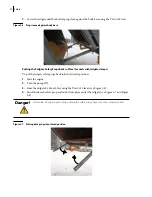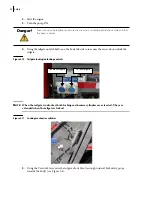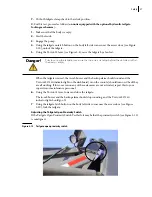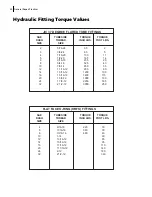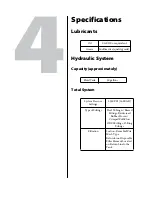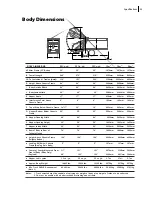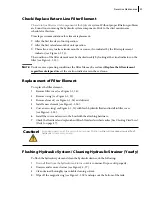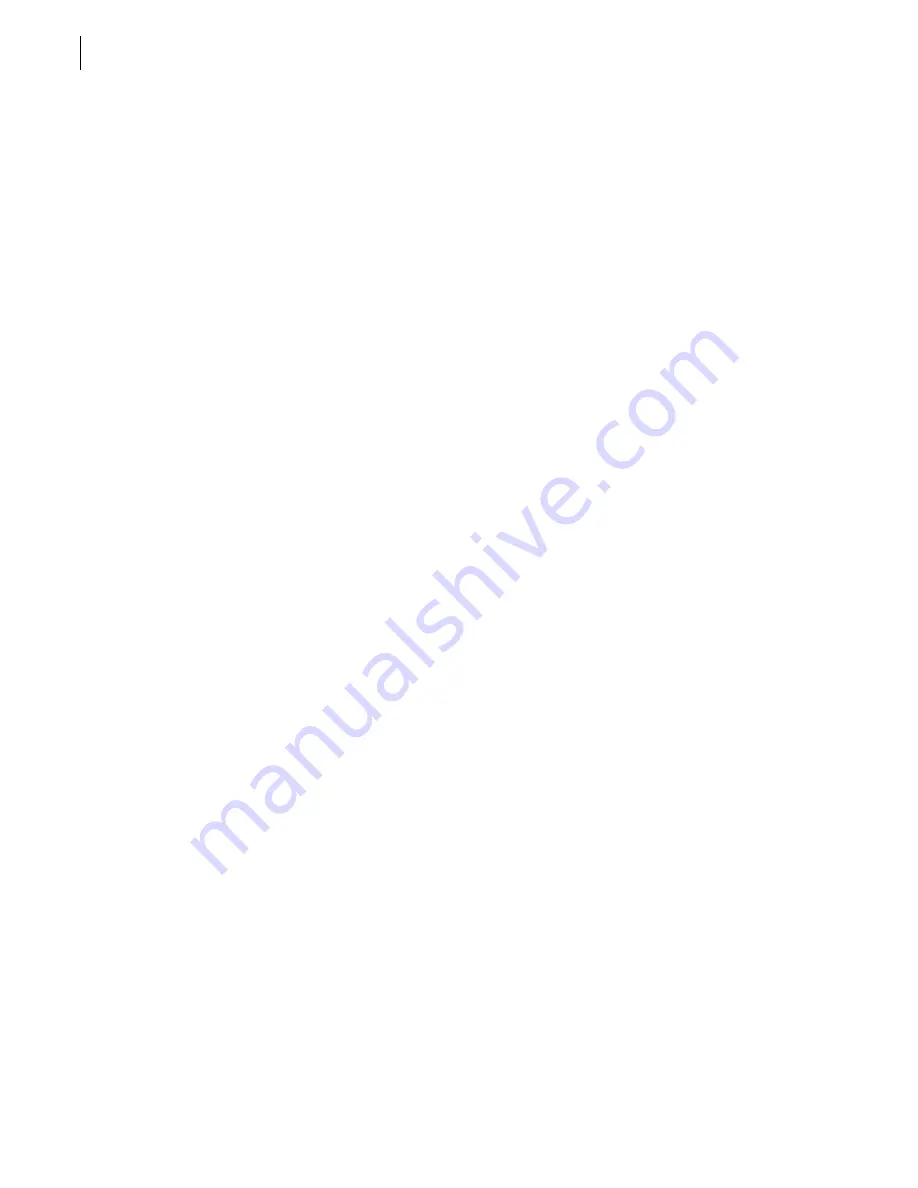
36 General Repair Practices
When preparing to use the torch, make certain that the regulator valves are all the way out to the
“off” position before the main tank valves are opened to protect the regulators from sudden
impact of tank pressure.
When opening the tank valves, stand alongside of the regulators, out of the way, in case they blow
out.
Backfiring or “machine gunning” at the torch is very dangerous and can lead to a major explosion.
Welding should be done in a location well away from flammable materials.
Removal, Disassembly and Repair
Observe the following:
Cleanliness is very important; dirt is the number
one cause of wear in bearings, bushings and
especially in hydraulic components.
Inspect hydraulic components for leaks before cleaning. The dirt buildup on the component can
aid in tracing fluid leaks.
Clean hydraulic connections before removal to prevent dirt from entering the component.
Loosen hydraulic fittings slowly to release pressure.
Cap hydraulic fittings immediately after removal to prevent fluid from leaking.
Clean the component in non-flammable solvent before disassembly.
Inspect the component after cleaning for signs of wear or external damage.
When disassembling a component, note the position of each part as it is removed to aid in
reassembly.
During disassembly note the condition of each part as it is removed to aid in diagnosing problems
and to help prevent them in the future.
Clean and inspect disassembled parts for wear, cracks, dirt, etc.
After cleaning and inspection, reusable hydraulic parts should be immediately coated with clean
fresh hydraulic fluid to prevent rust formation. If these parts are not going to be reinstalled
immediately, they should be wrapped in a clean lint free cloth or paper to prevent nicks or
scratches.
When resealing a cylinder or valve, replace all seals and o-rings that are disturbed during repair.
The price of a few seals is very little compared to a return repair job.
Reassembly and Installation
Observe the following:
Assemble parts in the same position as removed.
Align parts accurately before mating.
Inspect o-ring and seal grooves for sharp edges, nicks or burrs before installing new sealing parts.
Lubricate all new sealing parts with clean, fresh hydraulic fluid before installation.
Use care not to damage new sealing parts on reassembly.
Содержание 2R-III
Страница 1: ...2R III MAINTENANCE MANUAL...
Страница 2: ......
Страница 3: ...2R III MAINTENANCE MANUAL...
Страница 5: ......
Страница 6: ......
Страница 20: ...10 Introduction...
Страница 42: ...32 Safety...
Страница 58: ...48 Preventive Maintenance Figure 5 1 Hydraulic tank w return filter 1 2 3 4 5 6 7 8...
Страница 66: ...56 Preventive Maintenance...
Страница 102: ...92 Troubleshooting...

